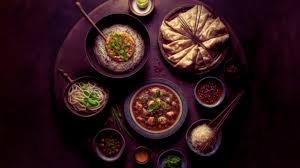Introduction About Buší
Buší is a traditional handcrafted textile renowned for its problematic patterns, colourful colours, and cultural importance.
Originating from Eastern Europe, it holds a special region inside the hearts of artisans and consumers alike, reflecting both creative heritage and realistic software.
Made from herbal fibers like wool or cotton, Buší is not only a ornamental piece but also a symbol of culture and craftsmanship passed down via generations. This article delves into the charming international of **Buší**, exploring its records, sorts, production system, and its relevance in modern times
What is Buší? A Definition
At its center, Buší refers to a kind of textile this is traditionally handcrafted the usage of herbal materials including wool or cotton. Originating in nations like Serbia, Bulgaria, and Turkey, it is frequently woven into rugs, garments, or ornamental pieces. What units **Buší** apart is its complex design, which can function geometric or floral motifs, and the painstaking handweaving system that offers each piece a completely unique and personal touch. The call **Buší** has turn out to be synonymous with durability, inventive expression, and cultural background.
The Origins and History of Buší
Buší can trace its roots back to the 15th century in Eastern Europe, particularly inside the Balkan location. Initially, these textiles had been made in small villages, the usage of locally sourced wool and dyes. Over the years, the strategies and substances have evolved, but the essence of Buší has remained the same. From being a sensible item utilized in regular existence to turning into a ceremonial and decorative piece, the history of Buší is a testomony to the rich cultural cloth of the regions wherein it originated
Key Characteristics of Buší
The defining characteristics of Buší consist of its handcrafted nature, problematic designs, and the use of natural fibers like wool or cotton. What makes Buší genuinely unique is the effort and time that goes into each piece. Artisans frequently spend weeks or maybe months developing a single fabric, ensuring that each thread is flawlessly woven into the layout. These textiles are not most effective visually beautiful however also exceptionally long lasting, making them suitable for both realistic and decorative use.
Traditional Buší A Reflection of Heritage
Traditional Buší is crafted using time-commemorated techniques and natural substances. In villages across Serbia and Bulgaria, neighborhood artisans use handweaving techniques that have been handed down for generations. The end result is a textile that no longer most effectively reflects the wealthy history of the location; however, it additionally serves as a practical and exquisite object. Whether it’s a rug, a garment, or a wall putting, conventional Buší pieces are a party of artisanal craftsmanship and cultural identity.
Modern Variations of Buší

While traditional Buší stays exceptionally valued, contemporary variations have additionally emerged. These more moderen variations frequently comprise artificial fibers and dyes, making them greater low cost and accessible. Machine-spun yarn and commercially to-be-had dyes permit for extra vibrant colors and less complicated maintenance. However, even with those improvements, the spirit of **Buší** stays intact, as modern-day designs still pay homage to the conventional patterns and styles.
Regional Differences in Buší
The designs and styles of Buší can range significantly relying on the area. For instance, in Bulgaria, Buší is often characterized by using floral motifs and bright, joyful colorations. In Croatia, the patterns have a tendency to be more geometric and subdued. Turkey, with its rich lifestyle of Islamic artwork, regularly functions tricky and problematic designs. These regional variations add any other layer of richness to the already various global of Buší showcasing how neighborhood cultures impact the artwork of fabric making
How Buší is Made A Step-by way of-Step Guide
The advent of Buší starts offevolved with the choice of materials. Artisans usually use wool or cotton, with herbal dyes derived from vegetation or minerals. The weaving procedure may be finished by using a hand or on a loom, depending on the favored stage of the element. Traditional handweaving requires a high degree of talent and precision, with each sample carefully planned and finished. Once the fabric is woven, it undergoes fine control to make certain that it meets the high standards associated with Buší
Applications of Buší in Daily Life
Buší is greater than only a decorative item; it has sensible uses as properly. In Eastern European houses, Buší rugs, table runners, and wall hangings are common, presenting each beauty and functionality. In a few areas, Buší textiles are also used to make traditional garments, which can be worn for the duration of galas and ceremonies. These pieces not only decorate the aesthetic attraction of an area but additionally serve as a tangible connection to the cultural and historical past
Innovations and Trends in Buší
In latest years, the world of Buší has visible numerous innovations. Artisans at the moment are experimenting with green dyes and sustainable substances, making the production method more environmentally pleasant. Additionally, modern-day layout gear has allowed for more experimentation with patterns and styles, catering to present-day tastes while nevertheless honoring conventional craftsmanship. These innovations are assisting to maintain Bušíapplicable in a fast-converting international.
Challenges Faced in Buší Production
Despite its splendor and cultural significance, the production of Buší isn’t without challenges. The labor-intensive handweaving system can drive up expenses, making these textiles more costly than heavily produced alternatives. Additionally, the market for classic textiles is shrinking as clients gravitate towards cheaper, machine-made products. Ensuring the fine and authenticity of Buší remains a regular challenge, as does keeping the traditional talents required to create those lovely pieces.
How to Care for Your Buší Textile

Proper protection is fundamental to keeping the beauty and sturdiness of **Buší** textiles. These textiles should be wiped clean using moderate detergents and bloodless water to prevent color bleeding or fading. It’s also vital to save **Buší** in a cool, dry area, far from direct sunlight, which can cause the colors to vanish. With the right care, a **Buší** piece can last for generations, becoming a cherished family heirloom.
FAQs about Buší
1. What substances are used in making Buší?
Most Buší textiles are crafted from natural fibers like wool or cotton, even though cutting-edge variations may additionally use synthetic fibers.
2. Where does Buší originate?
Buší originated in Eastern Europe, especially within the Balkan area, and has been part of the cultural background of countries like Serbia, Bulgaria, and Turkey.
3. How is Buší exclusive from different textiles?
**Buší** stands proud because of its difficult handwoven designs, use of herbal dyes, and strong cultural significance.
four. Can I use Buší in cutting-edge home decor?
Yes, modern variations of Buší are designed to suit present day styles while maintaining the conventional aesthetic.
five. How have to I easy my Buší textile?
Scrubbing **Buší** textiles with mild detergents and bloodless water and avoiding harsh chemical substances is first-rate.
Conclusion
In conclusion, Buší is not just a textile; it is a symbol of cultural history, inventive craftsmanship, and sustainable practices. With its rich history, elaborate designs, and sensible programs, Buší continues to be a beloved part of the Eastern European lifestyle. Despite the demanding situations it faces, the destiny of **Buší** looks promising as artisans and customers alike try to keep this age-old culture whilst embracing present-day innovations. Whether you’re seeking to upload a hint of records to your home or genuinely respect the artistry behind handcrafted textiles, Buší offers something honestly special.

